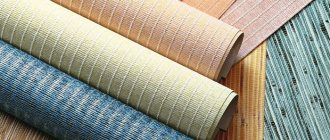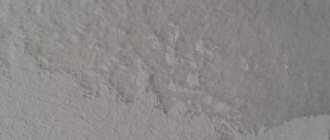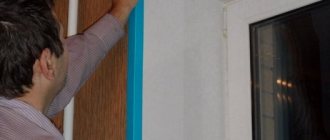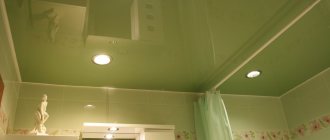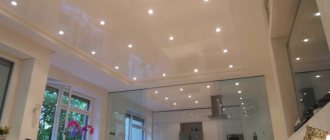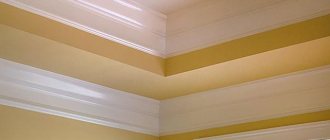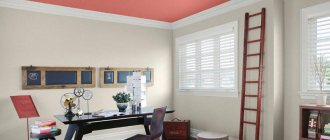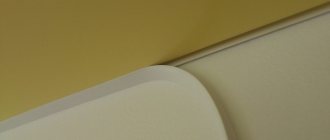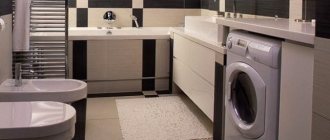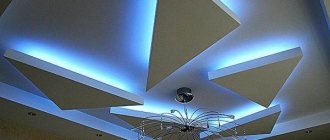The advantages that glass wallpapers have allowed them to take their place among the finishing materials for indoor surfaces:
- they are several times stronger than even textile wallpaper;
- They are easy to care for; a cloth, water and detergents are enough to remove dust and dirt;
- they are environmentally friendly, do not burn and do not accumulate static voltage;
- they are permeable to air, the walls breathe;
- they can be painted, and they can withstand this process up to 20 times!
Advantages of the material and its application
Fiberglass ceilings are made from glass that, when melted, forms a thin thread. It is applied randomly in layers, forming a beautiful pattern. Next, the layer is subjected to strong compression and impregnated with converted starch.
Fiberglass is used in production and everyday life. It is associated with the production of polymers for roofing and repair work. It also prevents the formation of pipe corrosion in drainage systems.
In everyday life, fiberglass is attached to the ceiling for leveling, getting rid of imperfections, and ensuring the adhesion of planes.
Advantages of fiberglass:
- Made from natural ingredients, therefore hypoallergenic.
- Breathable base, so the risk of mold or mildew is minimal.
- Not electrified.
- Strengthens the surface on which it is applied. Prevents cracks from spreading.
- Dense, but bends well, which prevents deformation of the canvas.
- You can renew the coloring up to ten times, which indicates its durability.
- Prevents the spread of fire.
- Withstands temperature changes.
- Moisture resistant.
- Not afraid of mechanical damage.
- Has heat-insulating properties.
- Easy to clean, the use of chemicals is acceptable.
- Has different designs.
When working, use PPE, as falling small particles can damage the eyes and respiratory tract.
Do I need to putty on fiberglass paint before painting?
A positive quality of the web is that after gluing it to the wall, you can immediately begin painting the surface of the walls or ceiling. In this case, the word immediately means. After the surface has completely dried, simply without preliminary or preparatory work.
Fiberglass web application on the ceiling video
It is necessary to putty only if you want to have a completely flat surface of the wall or ceiling or if you want to hide the texture of the finishing material, in this case - cobwebs.
The best option for preparatory work before gluing would be to prime the fiberglass with glue, thereby reducing paint consumption. This is correct and profitable, because glue is much cheaper than paint.
Choosing glue
Fiberglass adhesive must be strong and of high quality. There are two types:
- A ready-made mixture that does not require preparation and can be used immediately. When purchasing, be sure to check the service life, since a product with an expired period is unsuitable for use.
- A dry mixture that requires preparation and has a deadline for using the finished composition. However, the required amount of glue is prepared from it at the moment.
Preparation of dry mixtures is carried out strictly according to the instructions. Otherwise, improper preparation will lead to poor-quality fiberglass covering of the ceiling.
Before buying glue, you need to know what components the composition should contain:
- Converted starch.
- Bactericidal elements.
- Plasticizer – to give the base flexibility after complete drying. This prevents the formation of cracks and damage.
- PVA.
- Fungicidal additives prevent the development of bacteria.
The market range of glues is wide. The following have gained popularity:
- BluTack is multifunctional, has good adhesion, is economical, and has bactericidal and fungicidal components. Complete drying is achieved after two days. The coloring composition can be applied every other day.
- Oskar – high adhesion, economical, does not contain toxic compounds, which means they are safe for human health. The composition contains bactericidal components, which prevents the formation of mold and mildew. The compositions are available both ready-made and requiring preparation.
PVA glue is also used for gluing fiberglass to the ceiling. But when working with such a composition, it must be taken into account that the low-density canvas glued with it is capable of transmitting ultraviolet radiation, at which the composition acquires a yellow color, which can affect the condition of the entire surface being pasted.
The material is not applied to a plastered ceiling, as peeling will begin.
Pasting mixture
The glue for the “web” should be selected correctly. It needs a special one, which is designed specifically for this purpose. There is no need to try to save money and use other types of glue. This can lead to consequences that could not be expected.
When choosing glue for fiberglass, you need to make sure that it is intended for gluing this particular material
The glue is applied thickly, but without excess. It is very convenient that if there is not enough glue, and the mesh is already glued, then you can coat it on top - saturate it. The spider web mixture has the following advantages:
- the glue is completely environmentally friendly;
- leaves no stains or marks;
- final setting time – 2 days;
- does not react to cold.
Gluing instructions
If gluing cobwebs to the ceiling is being done for the first time, then you should definitely familiarize yourself with the operating technology.
Preparation
The main stage is preparing the plane. If the ceiling was covered with wallpaper, then for easy removal, they are well moistened and left to soak for up to half an hour. After removing the wallpaper, clean the surface on which it was pasted with a spatula. If the ceiling is whitewashed, then it needs to be washed away. This can be done with a wet cloth placed on a mop.
The cleaned or blurred surface is covered with a layer of primer. If there are large flaws or holes on it, then puttying is necessary. After the putty has completely dried, the surface is ready to be covered with cobwebs.
Before the gluing process, you need to prepare the adhesive composition. Mixtures that require preliminary preparation are provided with instructions. According to them, the amount of water required to prepare a certain amount of glue is calculated.
You should not use certain types of putty instead of special adhesive mixtures. This will lead to peeling of the fiberglass.
Progress
First you need to decide in which direction the fiberglass will be glued. From this, derive the dimensions of the canvases and cut them according to them, taking into account a couple of centimeters for the joint lines.
To apply the first canvas evenly, you need to mark an approximate line from the edge or middle of the ceiling.
Adhesive is applied to the ceiling surface in a width up to 5 cm greater than the width of the fiberglass. In corner parts, places where chandeliers are connected, it is better to use a brush up to 5 cm wide. In these places, special attention is paid to the fit of the fiberglass. Along a straight line, strong pressure is not applied to facilitate joining with the next canvas.
When joining is done, attention is paid to the drawing. It should be approximately the same. This is done simply, since the shift only needs to be made by a couple of millimeters. After joining, use a plastic spatula to press down the edges of the two panels and pull along the connection line.
There is a situation when the edges of the web are frayed or torn off. In such a situation, make the gluing overlap, and then use a knife to run along the line. This will remove uneven edges and the joint will be perfect.
Work should be carried out in a room where there are no drafts and the temperature is not lower than 10 degrees and not higher than 25 degrees. Avoid direct exposure to ultraviolet radiation.
We recommend watching the video instructions:
Let's paint the glass fibers
Fiberglass ceilings are convenient because they can be painted at any time in any color. Painting can be done plain or with white elements. The first option involves the use of a structural roller, and the second - dense foam rubber. When painting near the chandelier and in the corners, use a brush.
Most often, water-based emulsion with acrylic dye is used for painting. It applies evenly, dries quickly and is harmless to health.
It is enough to apply the water-based emulsion in two layers. Each one must dry thoroughly, otherwise the material will become wet and peel off.
Cobwebs for ceilings to be painted must be primed before painting. This will reduce the consumption of water emulsion and provide better adhesion.
Dyeing process:
- If the furniture cannot be removed from the premises, then cover it with film or cloth.
- Mix the paint until smooth.
- Add dye little by little, stir well until the desired color is obtained.
- Pour the coloring composition into a container where it will be convenient to lower the roller.
- Immerse the roller in the mixture and squeeze out a little.
- Apply paint evenly in one direction.
- Wait until completely dry.
- Apply a second coat in the other direction.
- Apply paint with a brush in hard-to-reach places.
- Wait until completely dry.
Glue on drywall
The principle of gluing to drywall is the same, only the following points are taken into account: the heads of the screws and seams are puttied, apply a layer of glue (instead of a primer), after drying, glue the fiberglass to the ceiling for painting.
Painting fiberglass web application: how to paint
If you decide to paint the canvas, then we recommend using water-based paint for such a surface. Such paint will retain the properties of the finishing material itself and, moreover, more than one layer of paint can be laid on it in an even layer.
Using painting fiberglass, how to paint correctly video
For painting you will need the following tools:
- a tray where the paint will be poured;
- a roller, preferably with a thread-type pile (you can use a paint brush, but then the painting process will take a long time).
It is necessary to paint the fiberglass spider web twice, that is, apply two layers of paint. It is worth noting that the time between applying layers should be at least 12 hours. To roll a seam, you need to use a “wing”; if you do it with a roller, the result will not be optimal. In principle, these are all the features of painting such a finishing material.
Adviсe
- It is not difficult to care for the coating of their glass fibers, because the material does not attract dust at all. You can carefully walk the surface of the ceiling with a vacuum cleaner three times a month. If you want to carry out wet cleaning, wipe the entire surface with a rag.
- During the gluing process, do not forget about the coincidence of the structure of each next sheet. The threads of the material should also be directed in one direction. If you do not follow these rules, then after painting the fiberglass you will not get a uniform ceiling, but a canvas with different shades.
- The glass fiber trim is glued with the wrong side to the base of the ceiling covering.
- After gluing, close the windows and curtain them. This way the glass wallpaper will last much longer.
- When carrying out work on pasting the ceiling covering, it is important to follow the sequence and rules of the process. When choosing a material, consider the size of the room. Choose your fiberglass adhesive wisely. Regular construction adhesive is not suitable for this type of work.
- You have to glue at a height, so follow safety rules.
- Be sure to check the entire surface before gluing. It should be smooth. If you find any irregularities or holes, they need to be filled with putty.
- Even if the work is done independently, it is advisable to do it together. Fiberglass sheets are flexible, so you need an assistant. The main thing is not to damage the sheets during the gluing process.
- Fiberglass wallpaper is an environmentally friendly material, so it can be hung even by people prone to allergies.
Let's paint the glass fibers
Fiberglass is attractive because its surface can be painted any color you like. Of course, it must be combined with the interior and color scheme of the room.
It is better to choose acrylic paint for glass fibers. It dries quickly and the smell is not too strong.
If you need a coating of one tone, then the paint is applied with a structural roller. The surface with white splashes is painted over with a foam roller. Don't forget about the joints - use a brush to work on them.
Apply paint in two or three layers. Just give each layer half a day to dry completely. Otherwise, the glass wallpaper may lag behind the ceiling.
Ceiling care
Thanks to its physical and chemical properties, dust does not settle on this material. This makes it very easy to care for. To maintain cleanliness, it is enough to wipe the entire covered surface of the ceiling with a damp cloth once or twice a quarter. You can also dry clean using a vacuum cleaner.
We figured out what glass wallpaper is, how to glue this material to the ceiling, and also learned how its surface is finished. Now you can safely get to work and improve your home for many years to come!
Subtleties and features of finishing ceilings using fiberglass
For subsequent finishing of the ceiling surface, you can use interior paint. Usually these are acrylic-based paints or the simplest option, water-based paint. Such coatings do not have harmful or pungent odors, and the density of the material provides the necessary tone and richness of the finishing coating. Due to the structure of the painting web, you can get an original drawing of any shade.
Another option for finishing ceilings with glued fiberglass is to create a mirror ceiling surface.
This will require more effort and consumables. A layer of liquid putty is applied to the dried surface of the web.
After drying, the surface is treated with sandpaper and sandpaper. Sanding is done carefully and carefully. Upon completion of grinding, the surface is thoroughly primed.
When laying canvas on a suspended plasterboard slab, the necessary goal is achieved - increasing the strength and integrity of the ceiling covering, regardless of whether the seams between the sheets are sealed with serpentine. Thanks to the painting web, it is possible to prevent further deformation of drywall under the influence of moisture.

